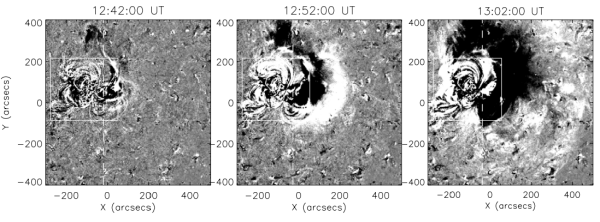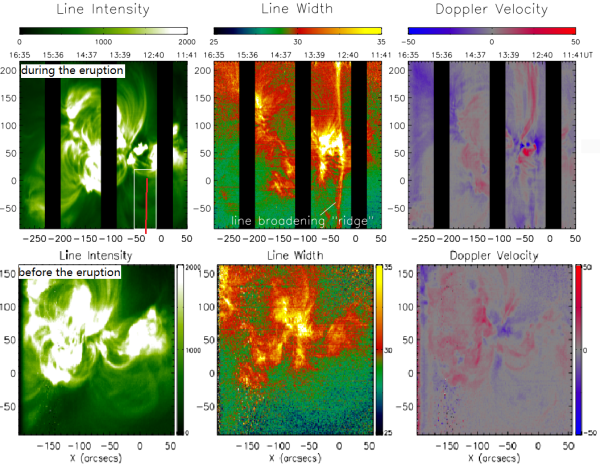EUV waves were first observed by the EIT telescope onboard the SOHO satellite.
They are best seen in the running difference images as bright fronts followed by
an expanding dimming region, which is believed to be strongly related to coronal mass ejections (CMEs).
EUV waves and the ensuing expanding dimmings are intriguing phenomena. However, the nature of EUV waves
is still under hot debate. Many researchers consider the waves as fast-mode MHD waves, i.e., the coronal
counterpart of Moreton waves which are observed in the chromosphere; while others believe that they are
non-wave perturbations, for example, the counterpart of CMEs in the lower corona. Spectroscopic observations
can provide more insight into the physical nature of EUV waves. Unfortunately, the waves are a global-scale
phenomenon, the field of view of spectroscopic observation is, however, usually limited compared with the waves.
Therefore, the spectroscopic observations that can catch them are very rare. Until now,
only
Harra & Sterling (2003) studied an EUV wave event using the SOHO/CDS spectrometer and TRACE images.
The EIS spectrometer onboard the Hinode spacecraft has higher spatial and spectral resolutions at multi-wavelengths
covering a wide temperature range, which enables us to study more detailed dynamics of various phenomena.
Has it caught an EUV wave event since its launch in September 2006? Yes, we found one on 19 May 2007, as shown in
Figure 1.

Figure 1:
The STEREO/EUVI 195 Å image showing that an EUV wave event propagates outward from an active region on 2007 May 19.
The white boxes mark the field of view of Hinode/EIS, and the dashed lines mark the positions of the EIS slit.
(Click figure to see full-size image.)
Figure 2 shows the line intensity, line width and Doppler maps of the same active region
observed by EIS before and during a CME on 2007 May 19. If we compare the two intensity
maps (left panels), we find that in the top panel, the region to the east of x ~ -30
arcsec is darker than the region to the right. The red line in this panel delineates
the propagation of the inner boundary of the EUV wave front measured from SECCHI/EUVI
images. The boundary falls at the interface between the bright and dark regions.
Therefore, this intensity decrease region should be the dimming region behind the EUV wave.
The comparison of the two maps of the line width shows this more clearly. In the upper
panel, we can see a ridge-like structure, corresponding to excess line broadening, which
is absent before CME eruption. With a more detailed study, we found that the strong excess
line broadening is at the outer edge of the dimming region, whereas the excess line width
in the wave front is negligible compared to the quiet regions. Moreover, we observed
outflows in the dimming region, which confirms the previous work by
Harra and Sterling (2003).

Figure 2:
The distributions of the Fe XII 195 Å intensity, line width, and the Doppler velocity during the CME eruption (upper panels) and before the CME eruption (lower panels).
(Click figure to see full-size image)
We compared the observational results with the numerical simulation of
Chen et al (2002, 2005).
We found that the "field line stretching" model for EUV wave/dimmings could well reproduce the
observations; not only the strong outflow in the dimming region but also the excess line
broadening at the outer edge of the dimmings. See this paper:
http://iopscience.iop.org/0004-637X/720/2/1254/ for more details.
In conclusion, the advantage of EIS helps us go deeper into the physical nature of
EUV waves/dimmings. Combining with the imaging observations, spectroscopic observations
by EIS may finally unveil the secrets of the controversial phenomenon.
Reference:
This nugget is the summary of a paper published recently on Astrophysical Journal 720 (2010) 1254-1261 by F. Chen, M. D. Ding and P. F. Chen.
The link: http://iopscience.iop.org/0004-637X/720/2/1254/


